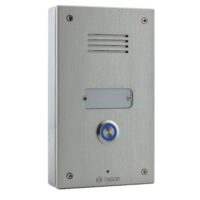What is a PABX or PBX?
What is a pabx pbx you ask? A private branch exchange (‘PBX’, ‘Private Business eXchange’ or ‘PABX‘ for ‘Private Automatic Branch eXchange’) is a telephone system owned by a business, as opposed to one owned by a common carrier or by a telephone company.
PABX History :
In the early days a company with a manual telephone switchboard or switchboard was operated by a person plugging cables into sockets. This was known as a private Manual Branch Exchange or PMBX). These were replaced by electromechanical and finally PABX electronic switching systems also called Private Automatic Branch exchange. PMBX are rare these days, and the term PABX and PBX are widely used. The term PBX is still more widely used. PBX systems select their own lines randomly to make outgoing calls. These lines are referred to as trunk lines.
A PABX connects all the business’s instruments separately to the public telephone network PSTN or ISDN. A PBX switchboard assists in that every internal call made is routed through the PABX (central switch).
Telephone sets, faxes,modems and other communication devices can also be connected to a PBX. All these devices are normally connected to extensions.
The PBX switchboard is installed at a business’s premises and connects incoming calls between the extension telephones installed (see Siemens HiPath 1120 PABX). The outside lines (trunk lines) are available for making and receiving calls external to the site (PSTN). Companies with more than one site can connect their PBXs together with trunk lines. PBX-like services can also be provided by equipment located off site at a central provider, delivering services over the public telephone network. This is known as a Private branch exchange Hosted PBX. Most local phone companies offer a Centrex which is a public telephone network offering all the features of a basic PBX but off site at a central provider.
Trends
VoIP (Voice over IP) known also as an IPBX (see Siemens HiPath 2030 IP PBX) , is one of the latest trends in PBX switchboard development which uses the Internet Protocol to carry calls. Most newer switchboards PaBXs support VoIP.
In the 1990s ISDN PBX systems replaced some traditional switchboards. ISDN offers various other features like conference calling, call forwarding and programmable caller ID.
The cost of switchboard PABX ownership is reducing sharply as recent open source projects (such as Asterisk PBX) is launched.
Switchboard Features:PBX
The switchboard PBX has three main functions:
* Establishing a party to party connection between the telephone users. (ie.directing a dialed number to a telephone, ensuring the telephone is not busy)
* Keeping the channel open for as long as users require
* Metering the call for billing purposes
Over and above these basic functions, switchboards offer many other features, each manufacturer trying to add extra features to differentiate their products from another.
Common capabilities include (manufacturers may have a different name for each capability):
* DDI or DID Direct Inward Dialing
* Auto Attendant
* Call transfer
* Speed Dialing
* Voice mail
* Follow-me
* Call forwarding
* Music on hold
* Automatic ring back
* Night service
* ACD – Automatic call distributor
* Call waiting
* Call pick-up
* Call park
* Conference call
*Telephone Management
* On Hold greetings
* Voicemail
* Directory services (an address book with contacts name and number)
Basic standards
* POTS stands for Plain Old Telephone System – a two-wire interface used in most homes. Effective and cheap allowing the use of most standard phones be used as an extension.
* proprietary – protocol defined by a specific manufacturer. Can only use the manufacturers designed equipment to connect onto their PBX
*DECT – a standard for connecting cordless phones
*Internet Protocol – SIP
Interfaces for connecting PBXs to each other include:
* QSIG – a PABX standard for connecting PBXs to each other
* Integrated Services Digital Network ISDN – Two types are offered. Basic (2 circuit capacity) or Primary (24 or 30 circuits)
* File – A folder containing the call records from the PABX.
These call records from the PBX are called SMDR. The records are sent to a call management system such as the MAN3000 (if installed) and are converted into a table giving valuable call information such as date and time the call was made, by which user, duration and cost. This can then be used to save money on wasted unnecessary calls or to bill third parties.




